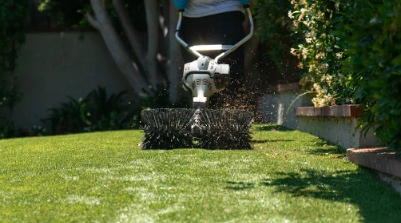How To Restore Your Artificial Grass Garden After A Flood In Oceanside?
 Artificial grass is a low-maintenance, long-lasting option for your home landscape. But when floods come, it can be one of the first areas of your garden to suffer damage. If you live in an area that’s prone to flooding, there are some things you can do to help protect your artificial grass from damage. Here are 14 tips to help you restore your artificial grass garden after a flood:
Artificial grass is a low-maintenance, long-lasting option for your home landscape. But when floods come, it can be one of the first areas of your garden to suffer damage. If you live in an area that’s prone to flooding, there are some things you can do to help protect your artificial grass from damage. Here are 14 tips to help you restore your artificial grass garden after a flood:
Remove Any Debris
Remove any debris from the surface of the artificial grass. This includes sticks, stones, leaves, and other debris that may have been brought in by the floodwaters.
Rinse The Artificial Turf
Rinse the artificial grass with clean water to remove any dirt or mud that may have been deposited on the surface.
Inspect The Turf For Damage
Inspect the turf for any damage that may have occurred during the flood. Look for tears, holes, or other damage to the artificial grass.
Repair Any Damage To The Turf
If you find any damage to the artificial grass, it’s important to repair it as soon as possible. This will help prevent further damage from occurring and will also help to keep your artificial grass looking its best.
Clean The Edges Of The Turf
Use a brush or broom to clean the edges of the artificial turf. This will help remove any dirt or debris that may have accumulated there.
Remove Any Stains
If there are any stains on the artificial grass, use a mild detergent or cleaning solution to remove them.
Rinse The Area Again
Once you’ve cleaned the artificial grass, rinse the area with clean water again. This will help remove any soap residue that may be left behind.
Allow The Area To Dry
After you’ve rinsed the area, allow it to dry completely before walking on it or using it again.
Check The Drainage
If your artificial grass is installed over an existing drainage system, check to make sure that it’s still working properly after the flood. If not, you may need to have it repaired or replaced.
Add Some Sand
If your artificial grass is prone to flooding, you may want to add some sand to the surface. This will help to weight it down and keep it in place during a flood.
Add A Barrier
If you live in an area that’s prone to flooding, you may want to consider adding a barrier around your artificial grass. This can help to protect it from damage during a flood.
Use A Dehumidifier
If your artificial grass is installed in an area with high humidity, you may want to use a dehumidifier to help keep it dry. This will also help to prevent mold and mildew from growing on the turf.
Store It Properly
If you know that a flood is coming, you may want to consider removing your artificial grass and storing it in a safe, dry place. This will help to protect it from damage during the flood.
Protect It From The Sun
If your artificial grass is installed in an area that gets direct sunlight, you may want to consider adding a shade cloth or other type of cover to protect it from the sun’s rays.
Conclusion
Floods can be devastating to your home and landscape. But if you take the proper precautions, you can help protect your artificial grass from damage. By following these tips, you can keep your artificial grass looking its best for years to come. For more information, contact Artificial Grass Oceanside at (760) 656-6090.

